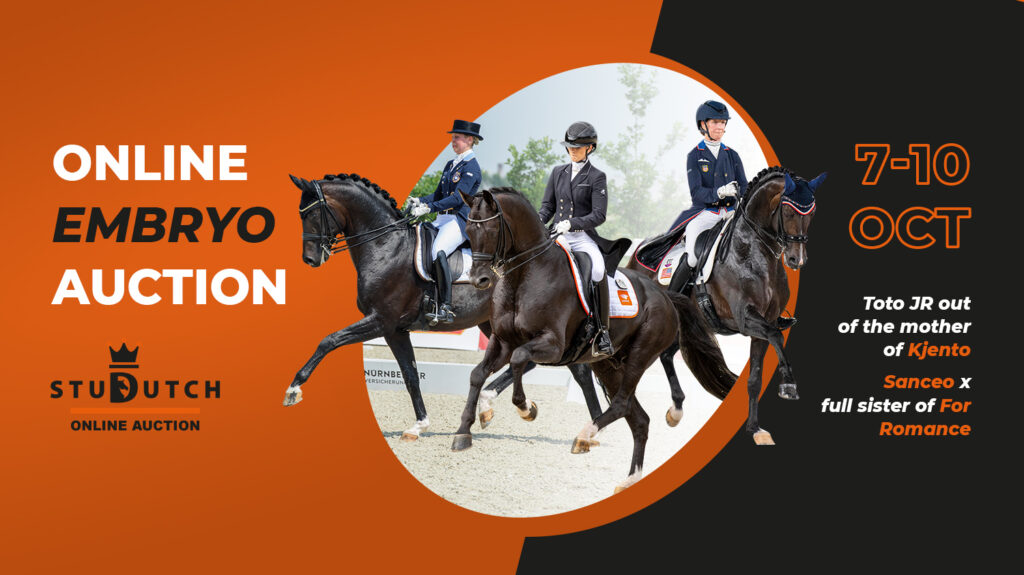An analysis of bloodlines by Christopher Hector
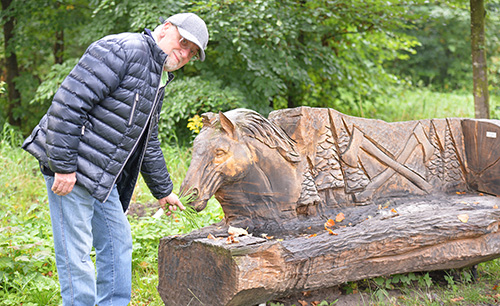
at the World Young Horse Championships in Ermelo

The showgrounds at Ermelo are usually an oasis of green, surrounded by trees so tall and dense that even in the day, they can switch the car’s dashboard settings to night format. The gardens surrounding the arenas are obsessively manicured, and dusky pink heath covers the encircling rolling hills. Not this year, as in the rest of Europe, drought has taken its toll, so no one was complaining when it rained (hard) for the first three days of the Championships. But through it all, the horses shone, it was a tribute to the brilliance of the breeders…
There was a time when Grand Prix dressage was in the grip of the worst of the ‘spectacular’ ugliness. My friend Christoph Hess suggested that the young horse classes with the emphasis on natural movement might lead the way back to sanity. Alas for a while it looked as if the young horse classes had fallen victim to the same disease. This year I am happy to report the overwhelming majority of tests were marked by tactful, correct horsemanship, they were a delight to watch.
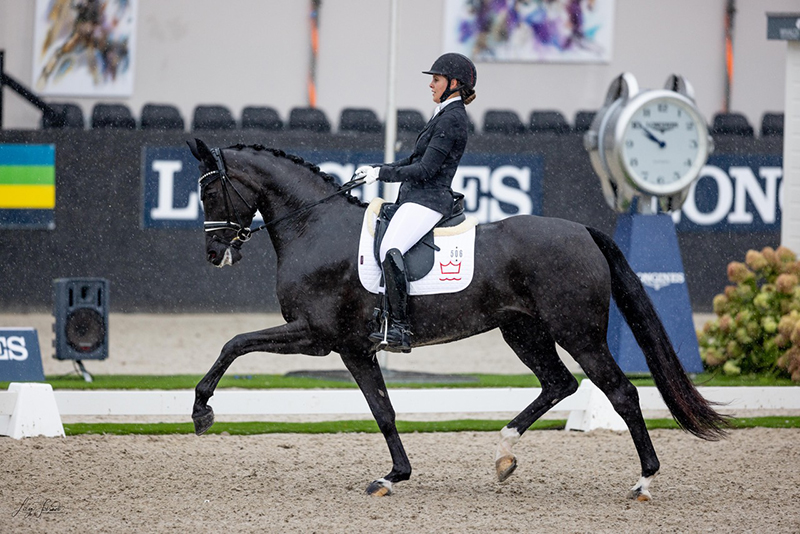
Lyngbergs St Paris and Victoria E. Vallentin
Photo credit: (photo Lily Forado)
Honestly, I don’t think I’ve ever enjoyed a class more than the Five Year old Final, it even had a heart warming feel-good result. The winner, the oh-so-elegant Lyngbergs St Paris, was discovered as a two-year-old in the field, by her rider, Victoria E. Vallentin, and her boyfriend, and Victoria has done all the training. Now Danish couple, Ingrid and Poul Thøgersen have bought into the mare to ensure she stays with her Danish rider.
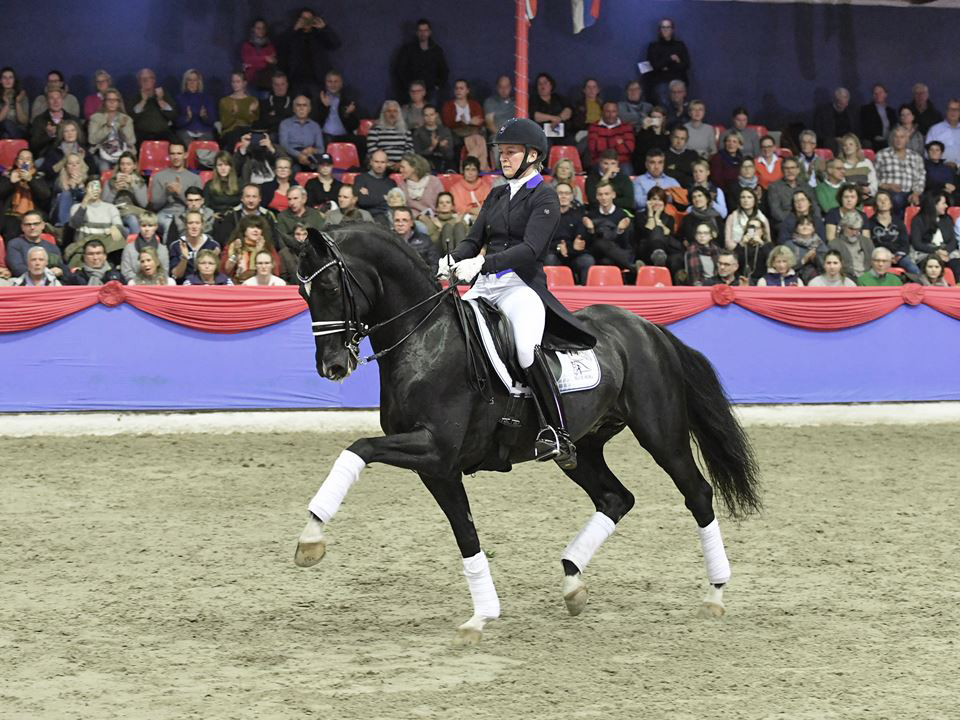
Blue Hors St Schufro
The mare is by Blue Hors St Schufro, a Grand Prix competitor (first in the Falsterbo 4* with a 81.08%) who is by St Moritz Junior, who is by St Moritz (Sandro Hit / De Niro) out of Wie Weltmeyer / Prince Thatch xx mare. Lyngbergs St Paris, is out of a mare by Blue Hors Rockefeller who is by Rohdiamant over one of Harli Seifert’s famous mares, Rumirell, making Rockefeller a full-brother to three Grand Prix competitors: Rubin Royal, Romanov and Rubin Action.
Story continues below the advertisement
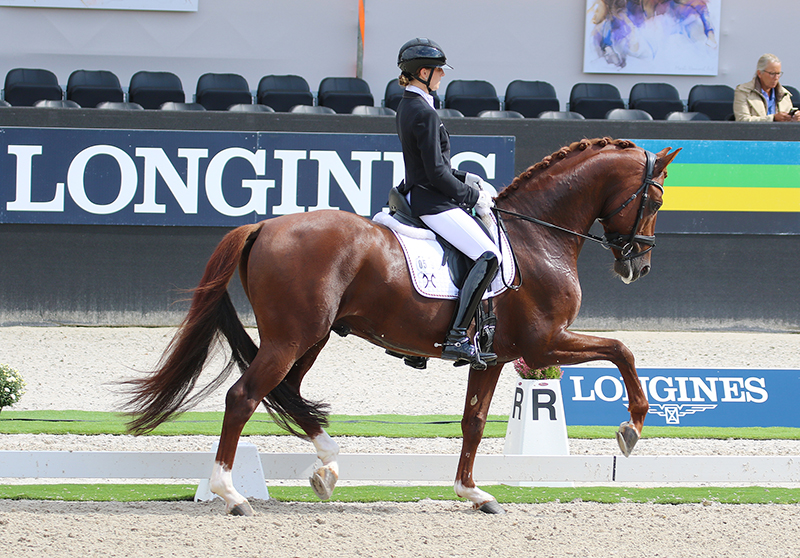
Vitalos (photo Ilse Schwarz (Dressage News)
If the winner was all delicate elegance, the Reserve Champion, Vitalos, was all fluid power. The stallion was ridden by the simply brilliant Leonie Richter, so soft and sympathetic, showing how the frame should alter for the different trots, and a real ability to collect the canter. A tilt of the head cost the stallion marks, but he didn’t lose any mare owners looking for their next choice of stallion.
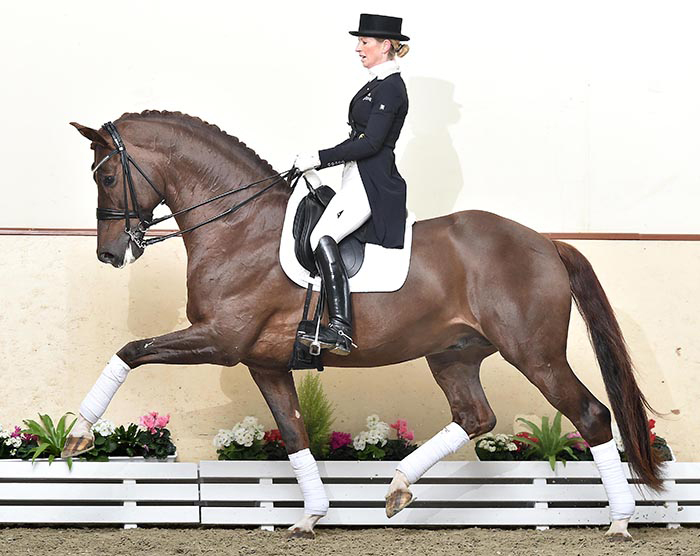
Vitalis, sire of Vitalos
Vitalos is by Vitalis, the most influential son of Vivaldi (Krack C / Jazz) out of a D-Day mare. Vitalis is particularly popular in Germany. Vitalos is out of a classically bred Hanoverian mare, De Niro over Wanderbursch II.
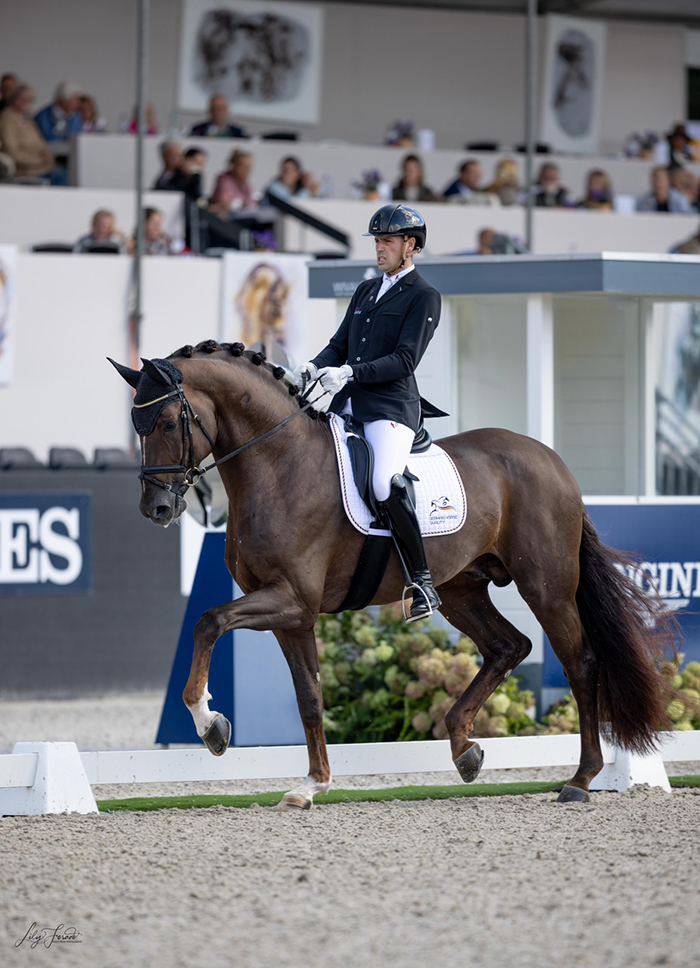
Fashion Prinz (photo Lily Forado)
Third to PSI stable jockey Frederic Wandres and Fashion Prinz. Now Frederic is a tall man, and suits the 190 cm (that’s 19 hands!) stallion, although one prominent breeder remarked to me over the weekend that he thought there was a danger too many too tall horses were appearing, he didn’t know why and suggested perhaps it was better nutrition, we both recalled the late Werner Schockemöhle’s maxim, the taller the horse the bigger the vet bill…
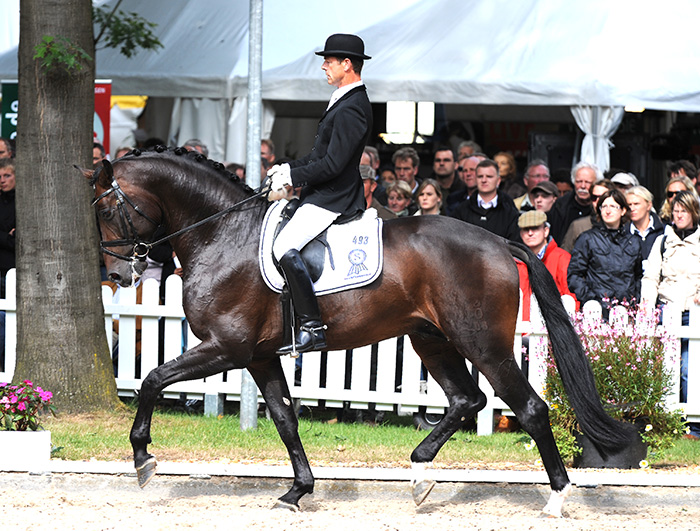
Fürst Romancier at the Bundeschampionate with Ulf Möller
Fashion Prinz is by the Fürst Heinrich son Fürst Romancier, out of a mare by the Sandro Hit son, Sarkozy.
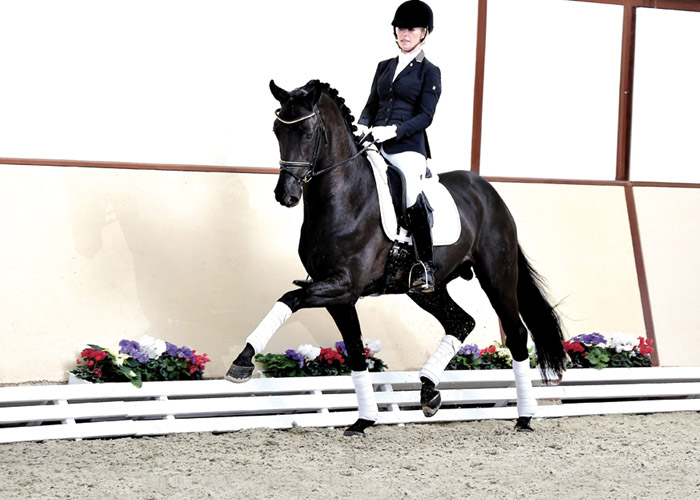
Fürsten-Look
The Seven-Year-Old Final was started in fine style by the Portuguese rider, Joao Pedro Moreira riding Fürst Kennedy who is by Fürsten-Look. Fürsten Look is by Fürstenball – who was well represented at these Championships with a series of his progeny that were all good types and movers, and all bore the stamp of their sire – out of a mare by the Donnerhall son, Don Kennedy. It was smooth stylish work and would have scored far better if instead of being first to go, they had shown later in the day. Still 79.422 was good enough to finish fourth.
Story continues below the advertisement
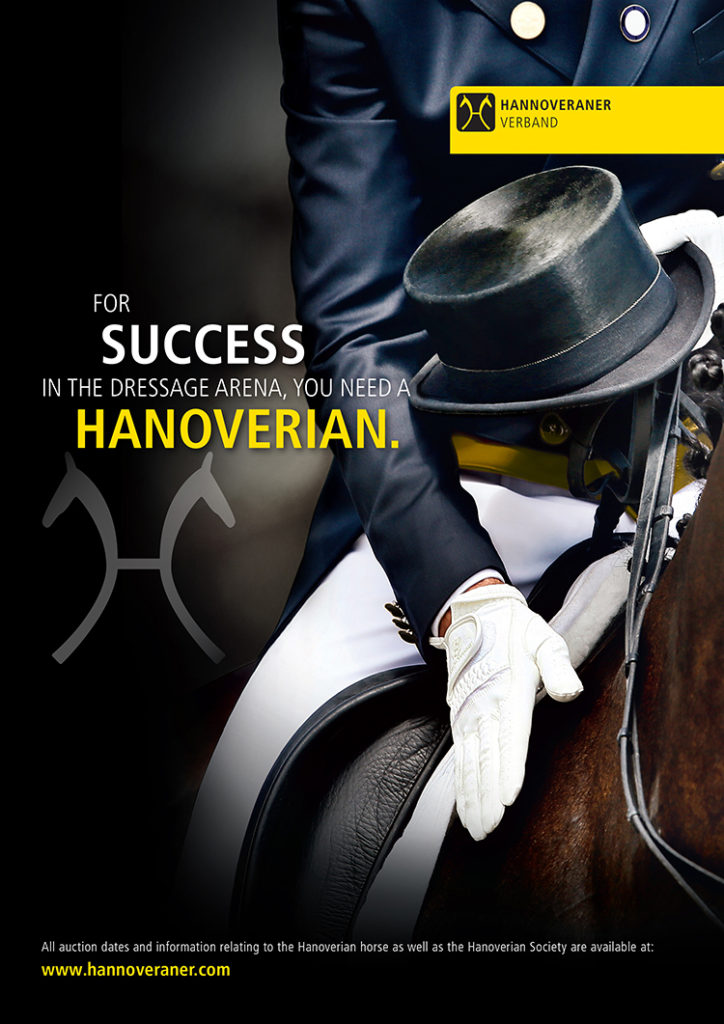
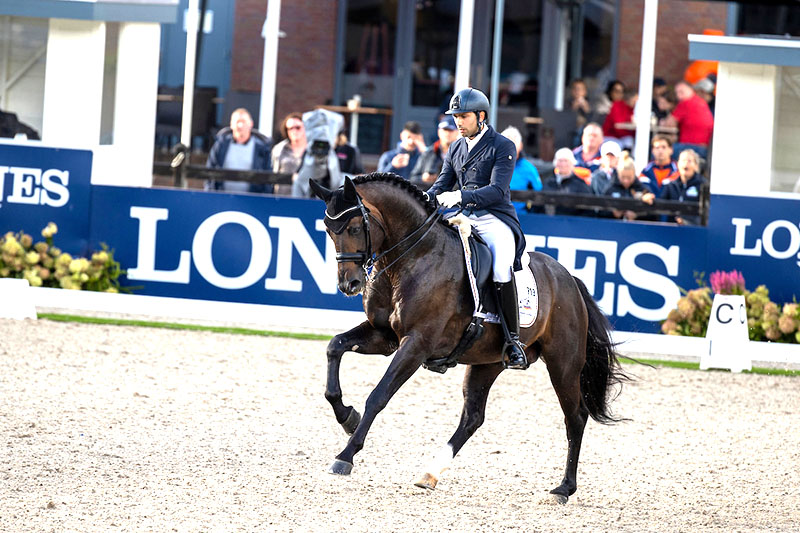
Escamillo (Photo – Dirk Caremans)
Third to the bay stallion, Escamillo, by Escolar, but lucky for him, he inherited his dam sire, Rhodiamant’s face, and something of his way of going, while still showing his Dad’s flamboyant paces. He was ridden by the Spanish rider, Manuel Dominguez Bernal, in beautiful balance, such a wonderful expressive trot and soft back, still a couple of minor glitches put him in third place.
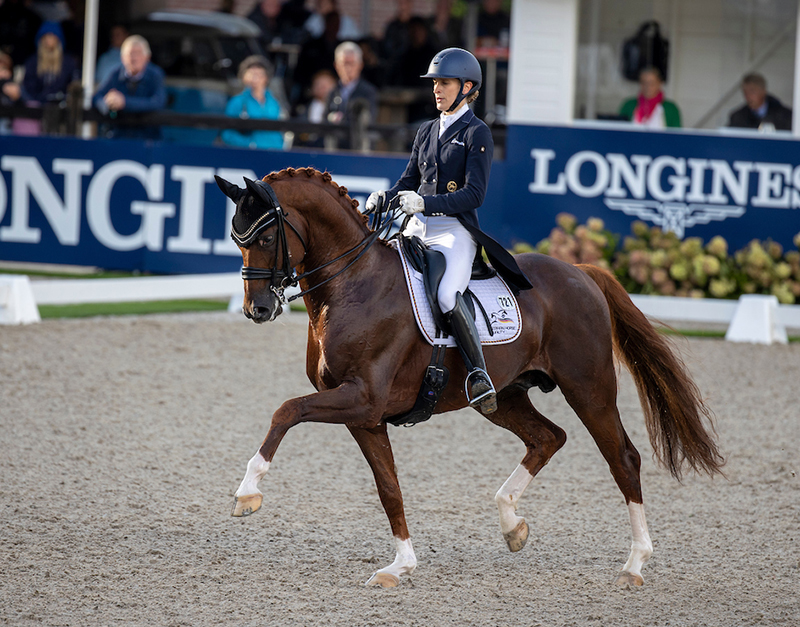
Destello (Photo – Dirk Caremans)
Second Beatrice Hoffrogge, you probably remember her as Beatrice Buchwald, who rode for Isabell Werth, and introduced the world to such stars as Belantis and Weihegold. Beatrice rode Destello, and the chestnut stallion was presented perfectly, and danced his way through the test, not a foot wrong, so elegant and soft to the ground. Destello is by Dimaggio who was Champion Five Year Old Dressage horse at the 2000 Championships, out of a mare by Fürst Fugger (Fürst Heinrich again, how unlucky we were he died so young) They take the Reserve Championship.
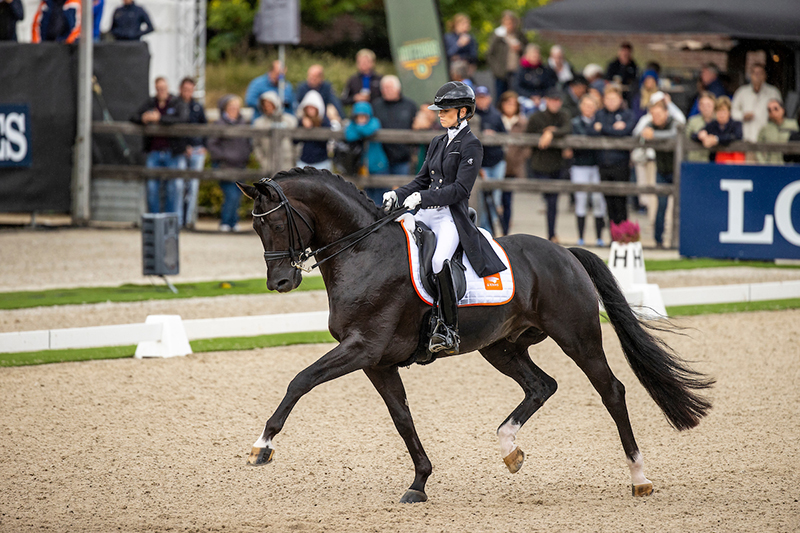
Kentjo (Photo – Dirk Caremans)
This final was made for the rider of the moment, Lottie Fry, fresh from her triumph with Glamourdale in Herning, riding another black stallion star, Kjento (Negro / Jazz). The Dutch crowd is cheering as they make their entrance and it is pretty full on, it’s a huge wonderful trot, though it would be nicer if the curb bit wasn’t not quite so close to parallel to the ground. The shoulder-ins are perfectly ridden, the horse showing such an ability to collect that the ground jury award ten for the trot. Lottie adds another Championship Medal to her collection.
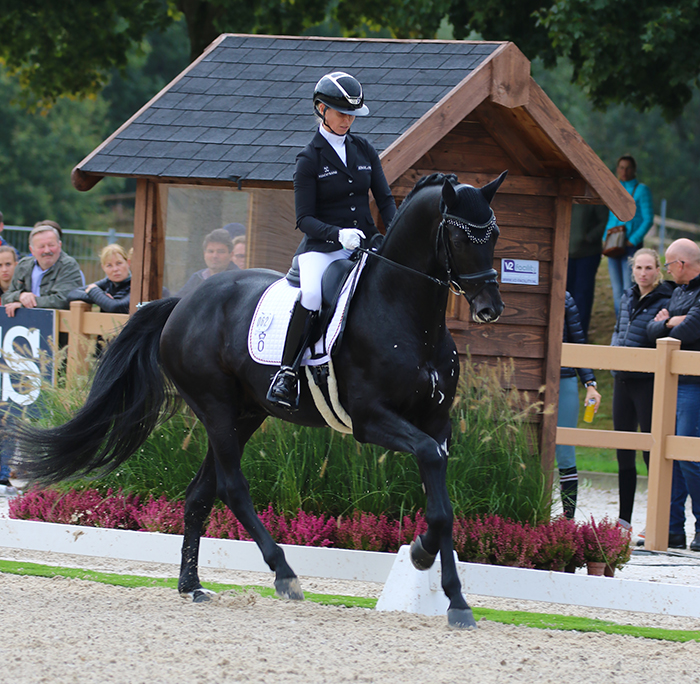
Global Player (photo Ilse Schwarz – Dressage News)
The Six Year Old Final was a triumph for Grand Galaxy Win, sire of two of the top three in the Final. Grand Galaxy Win is by Apache (UB40 / Krack C) out of Winner T (Jazz / Zeoliet) – so that’s two crosses of Jazz since Apache is a great grandson of the chestnut supersire. Grand Galaxy Win, like another young horse star (triple world champion!) Sezuan, was gelded when both lady owners decided they’d rather ride honest geldings than breeding stallions.
The Six Year Old title went to the stylish black stallion, Global Player (Grand Galaxy Win / Don Schufro). Global Player shown by Evie Möller with her usual professional panache – like her husband Ulf, Evie has the ability to save her horses in the qualifiers and come out all guns blazing in the final. It’s perhaps no surprise that like his grandsire, Apache and his dam sire Don Schufro, Global Player is WFFS positive.
The other Grand Galaxy Win was the third placed Lennox US (out of a Rousseau mare) and therein we find another feel-good-moment at the Champs, since the black stallion was ridden sweetly by eighteen-year-old, Jill Bogers fresh from competing with Lennox at the European Young Riders. It was a beautiful harmonious test from an exceptionally talented partnership.
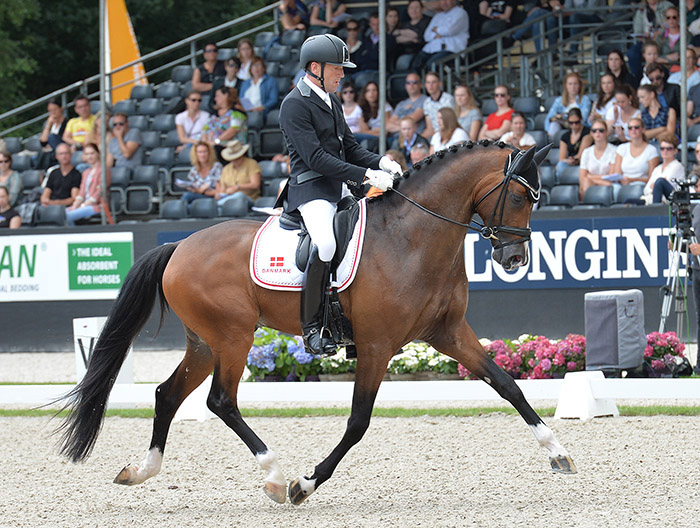
Donkey Boy
The class was also a triumph for the Danish stallion, Hesselhoej Donkey Boy, and while many of the influential stallions in Danish breeding have been German or Dutch imports, Donkey Boy has DWB brands back five generations. He is by ERA Dancing Hit (UNO Don Diego / Sandro Hit) out of Kamilja by the Grand Prix competitor, Milan who is by the Dutch bred, Michelino (by the Trakehner, Michelangelo) out of a mare by Kawango by the famous Trakehner, Ibikus.
Donkey Boy was bred by the prominent Danish breeder, Hans Jørgen Hoeck, who started the company Hesselhoej in 1997, and ran it with great success until the year 2021. Today, the company has been taken over by the son, Anders, while Hans Jørgen still has overall responsibility for the company and helps with the day-to-day operations. Over time, Hans Jørgen has produced several hundred horses in both jumping and dressage, with great results. Hans Jørgen himself has competed in both dressage and jumping up to Grand Prix.
Hesselhøj Donkey Boy won the 4, 5, 6 and 7 year Danish Championship finals, and was proclaimed an elite stallion when he was just eight years old.
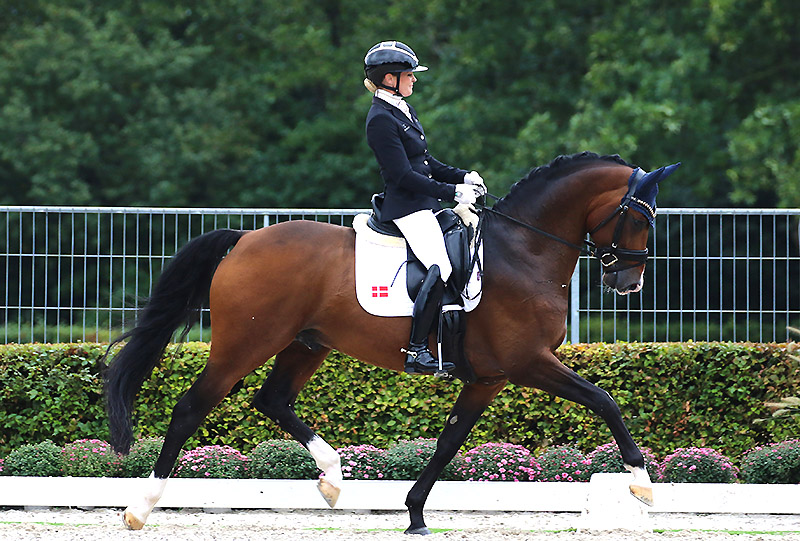
Hesselhøj Downtown (photo – Ilse Schwarz Dressage-News)
In the Six Year old final at Ermelo, Donkey Boy sired the Reserve Champion, Hesselhøj Down Town who is out of a mare by Zack, out of a mare by Ragazzo. He also sired the 12th placed, Diploid who is out of a mare by the Jazz son, Topaasch, out of a Davignon mare.
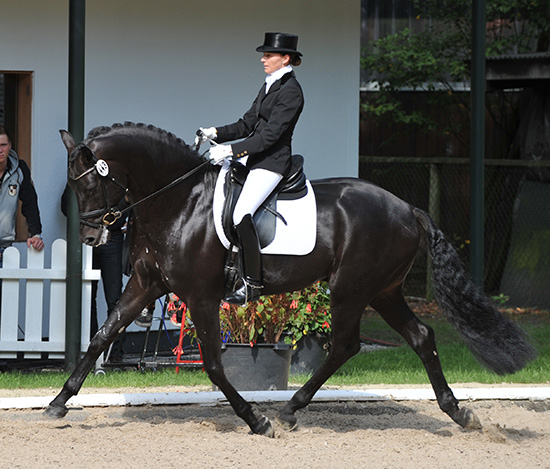
Fürstenball
Looking at the overall picture: the F-blood of Florestan dominated at Ermelo. Florestan appears 31 times in the pedigree of the nominated horses of all three age groups, including 14 times alone via Fürstenball or his son Fürsten-Look (3). Once again we see the dominating influence of Furioso II, Florestan’s grand-sire, while at the same time noting in awe, Furioso II’s prominence in jumping breeding.
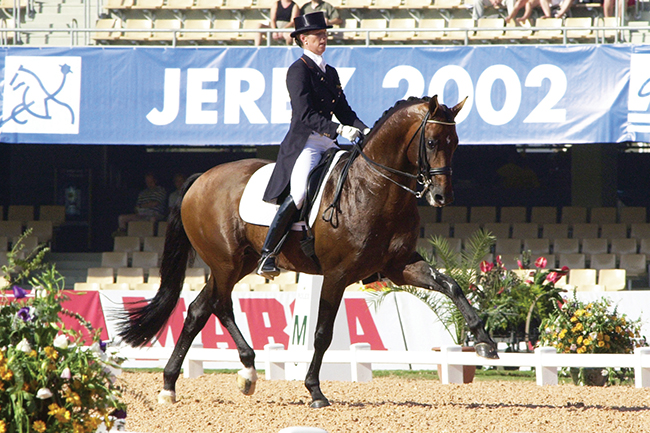
Krack C competing at the 2002 WEG with Anky van Grunsven
Krack C with 25, follows in second place via different lines, but mainly via Vivaldi. Krack C’s sire Flemmingh also sent another descendant via Goldberg without going through Krack C.

Franklin
Olympic stallion Ferro sent 22 descendants to the Championships, with Franklin alone represented seven times.
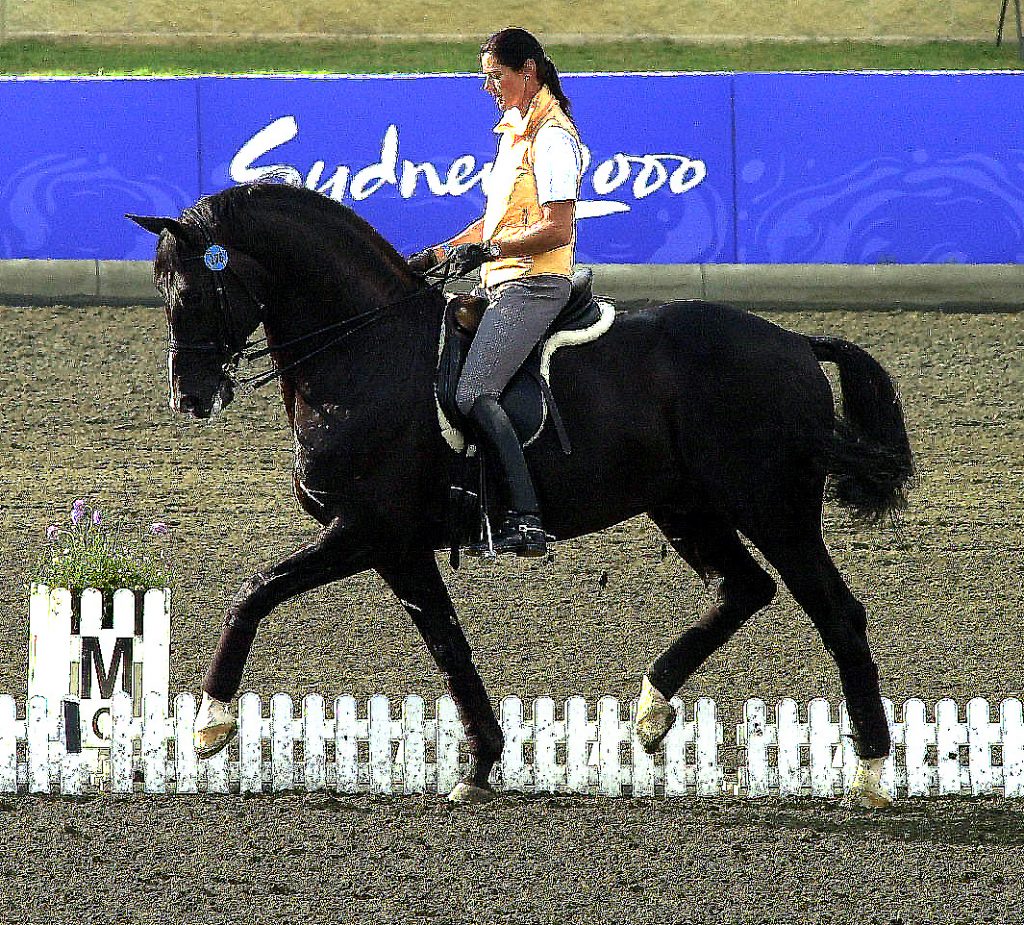
Ferro was by Ulft, by Le Mexico, a son of Furioso II’s full-brother Mexico.
Donnerhall blood is also still in demand with 22 D horses, seven of them via Hesselhøj Donkey Boy.
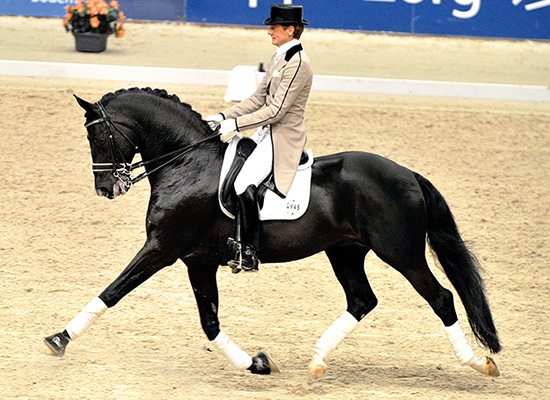
Gribaldi
Gribaldi is represented with 20 descendants, more than half of them through Totilas, followed by Millennium and a single Painted Black offspring.
Jazz also accounts for 20 participants. The S for Sandro Hit appears ten times.
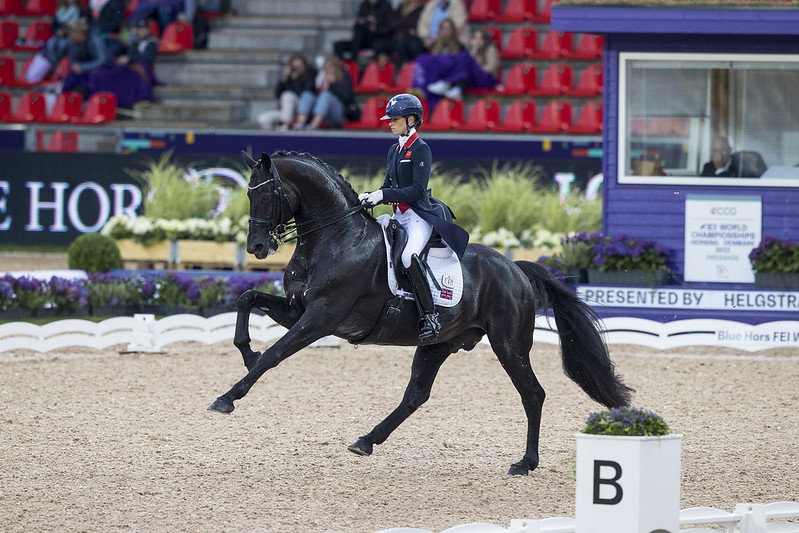
Glamourdale
In addition to that we have Ehrentusch reviving the ‘E’ line via Escolar (4), plus another formerly very prominent stallion line is celebrating a comeback: that of Lord Loxley with six representatives, including three Glamourdale offspring alone, and more will probably appear in the future after the World Championship success of the sensational black stallion.
Five horses go back to Ramiro, to whom the KWPN has erected a monument in front of his door, most of them through Helgstrand’s Revolution, once a World Champion himself. Brentano II is represented by five progeny through Bon Coeur.
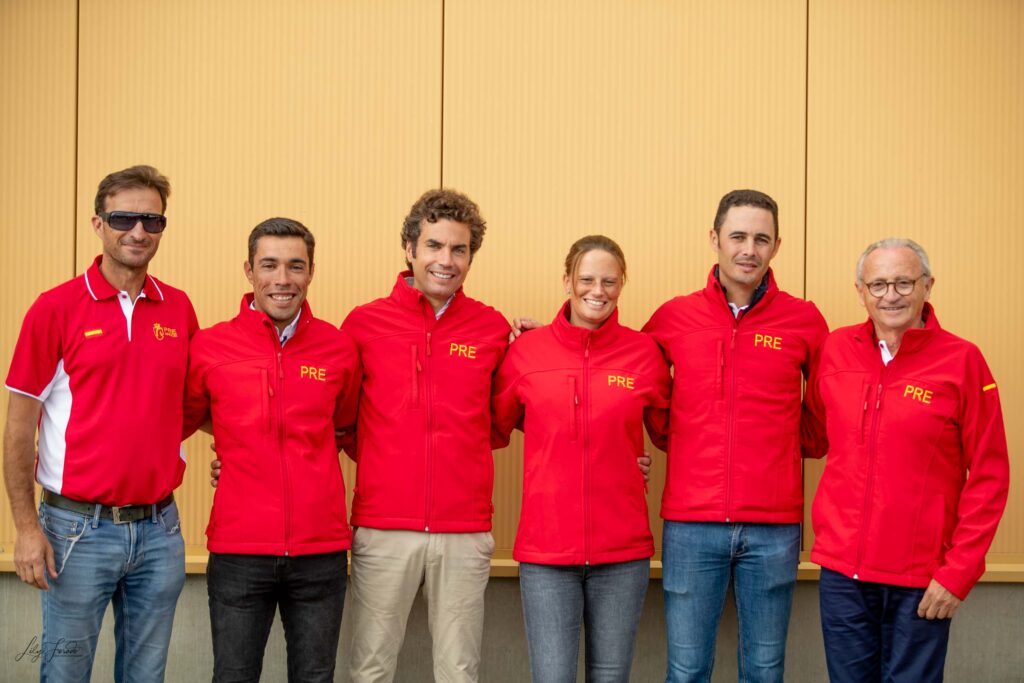
The Spanish team with their coach, Jürgen Koschel
The Spanish breeding association ANCCE was at the Championships with a contingent of six horses, Technical Director, Manuel Gonzalez Lopez, and one of the world’s great dressage trainers, Jürgen Koschel.
I asked Jürgen how long he had been working with the Spanish riders…
“Since 1995, the next year we did our first Olympics with Spanish horses, in Atlanta. They went well, it was really fun. Since then I have always helped them a little bit, it’s not constant, a few months every year.”
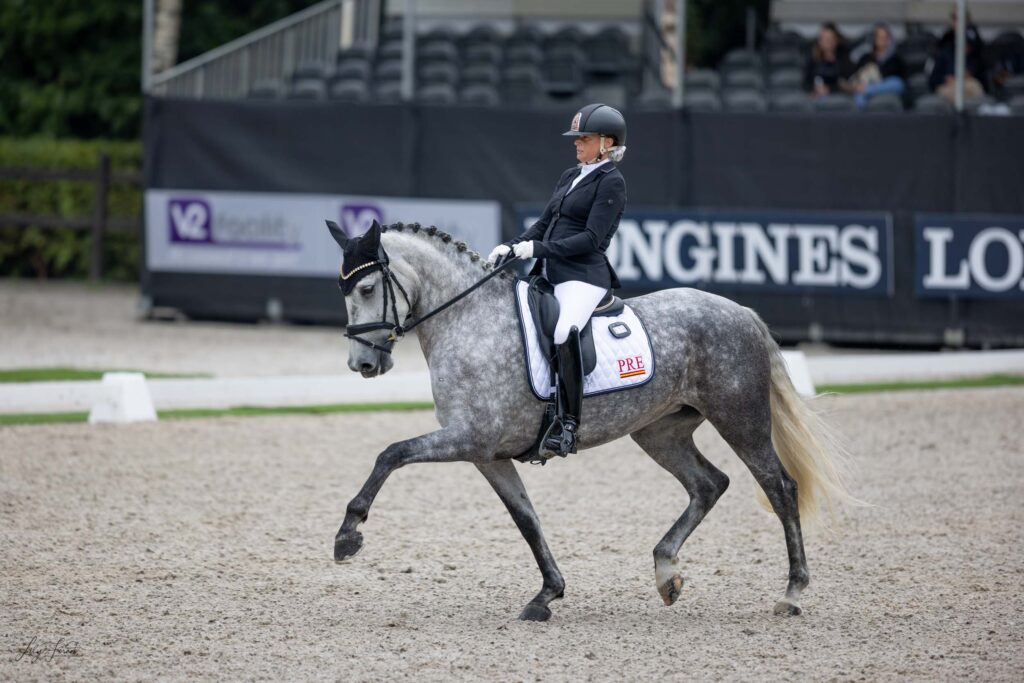
Exclusiva Monte in the five year old class (Photo – Lily Forado)
How many horses did you bring here?
“Six, two in each class.”
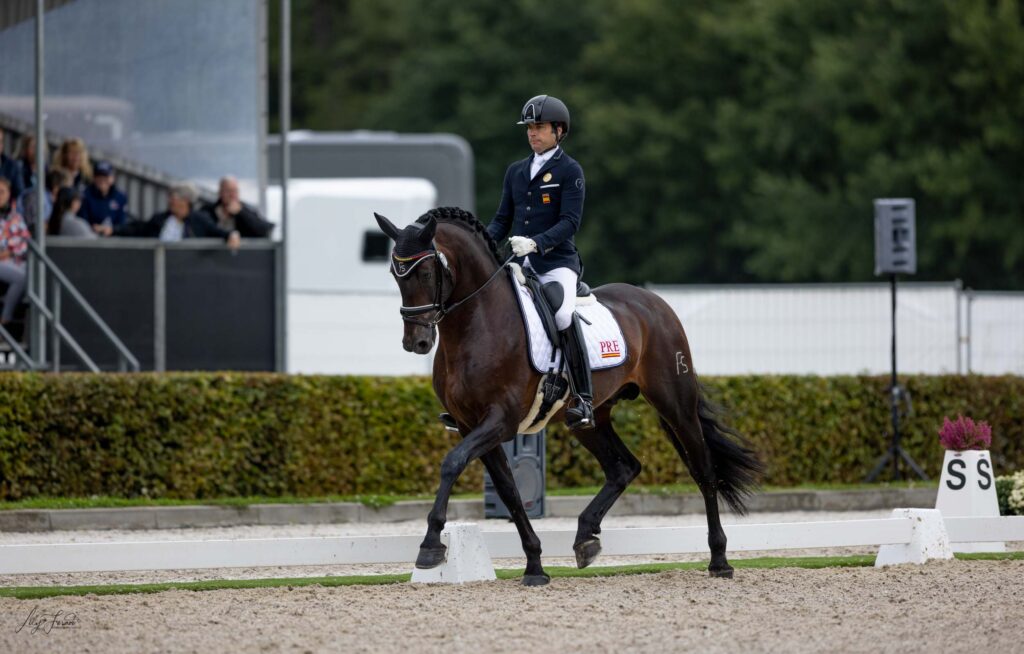
Pampero FS in the six year old class (Photo – Lily Forado)
Are you happy with the progress?
“It’s a little different from year-to-year because the breeding is not so big. This year we have not so super horses, in the years before it was better, but we are happy with what we have today.”
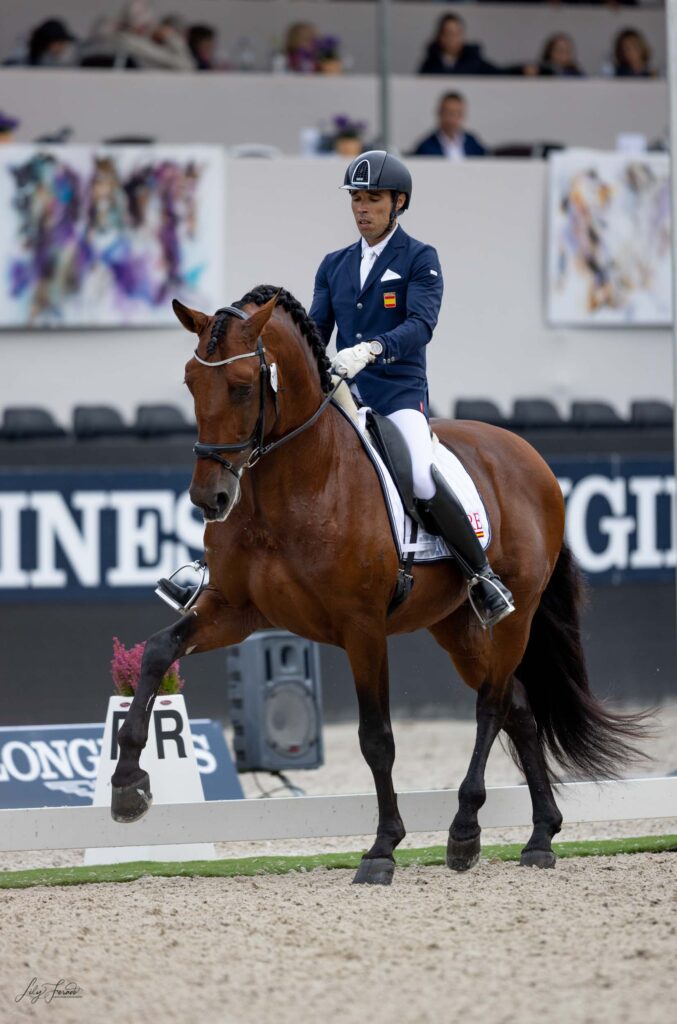
Quien Nadales in the seven year old class (Photo – Lily Forado)
What do you have to concentrate on?
“The breeding has to work on the basic gaits, so that here is not too much knee action, so that there is a little more elasticity in the back, we need more flexibility.”
And the riders, do you have to move them over more to the classical scale?
“Yes, absolutely, some of them are little bull-fighters! But okay it’s coming better and better, and they know what to aim for, it’s coming better every year”
Do you spend much time in Spain?
“Three or four times a year.”
A nice place to spend time…
“And very nice people, our boss Mr Lopez, our chef d’equipe, he is taking care of us, and all the breeders are here, it makes me very happy.”
The goal?
“Very easy, to make it better!”
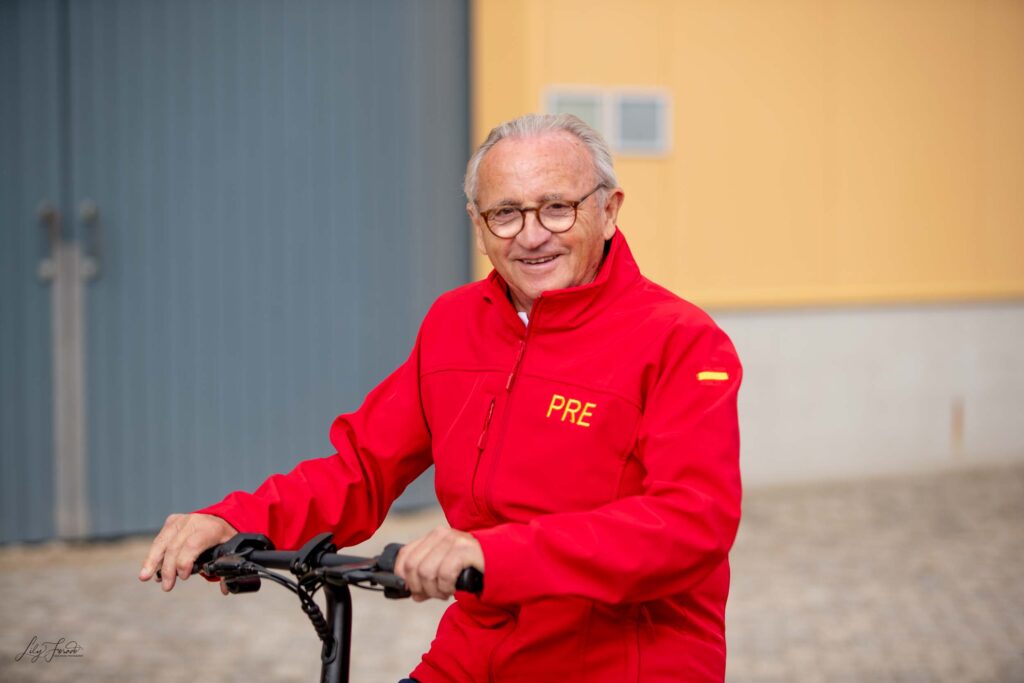
(Photo – Lily Forado)
Another acute breeding observer I caught up with at Ermelo is Eugène Reesink (please follow this link and learn about the amazing number of famous dressage horses, the Dutchman has been involved with). Eugène is widely celebrated through his promotion of one of the major lines on show at Ermelo, the V line, especially through the Vivaldi son, Vitalis…
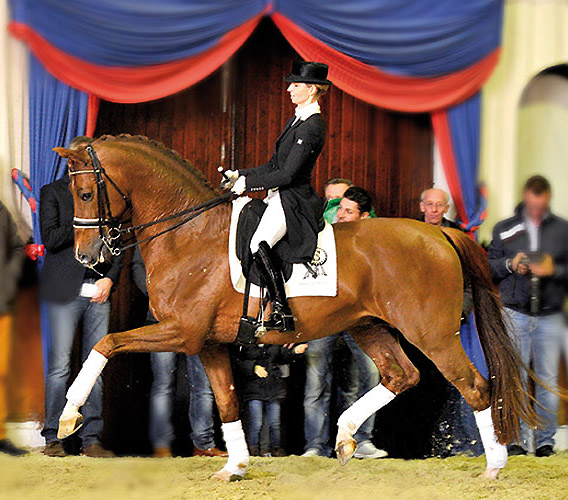
Vivaldi
When did you first see Vivaldi?
“As a two-year-old, at the KWPN stallion show – he was already fantastic, you might remark a little on his hindleg, but he was such a beautiful horse with a super front leg. I think he was second, Johnson first. That was a good year for Holland.”
He was initially very popular, but then it went back for a while, one year it was just sixteen mares…
“Yes, but one of the things with Vivaldi is that his semen is not fantastic. Joop van Uytert has really managed it well to have so many mares pregnant, but the numbers couldn’t be big.”
Did you watch the Five-year-old Championship?
“I really loved the St Schufro mare from Denmark, that was a surprise for me, I’d never heard of that mare, beautifully ridden, the way of movement I like, quick from the floor, elastic, I’m a fan of hers.”
And I thought the riding was very nice, no crazy spectacular…
“I think the judges were good, they are more and more judging the happy athlete.”
Another stallion keeper who was looking very happy at Ermelo, was Gert-Jan van Olst, it seems that everything he touches turns to gold, and the three offspring of the World Champion, Glamourdale, all looked good. I asked Gert-Jan what made Glamourdale special?
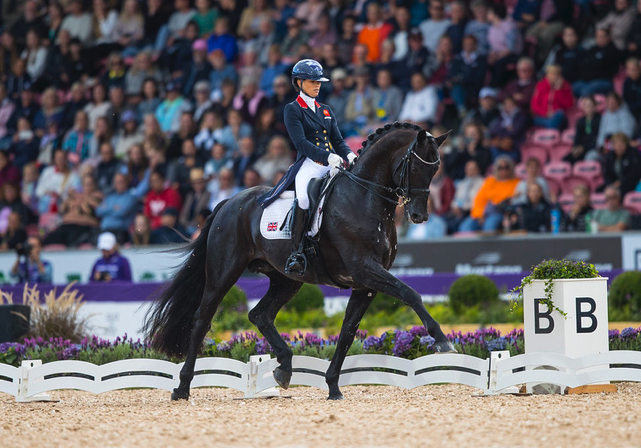
Glamourdale
“Expression, he has the look, that’s the first thing that gets to you. Aside from that he is built almost perfect, very strong back, very uphill and everything is very correct in the legs. He’s the complete picture of a horse, that you want. He has three very good gaits, good piaffe / passage. He’s very sound, his offspring are very sound. Everything is there – I’ve had a lot of horses in my life – but he is complete.”
“The best thing of course is his character, he comes into the ring and he gives himself 100%, he wants to do the job…”
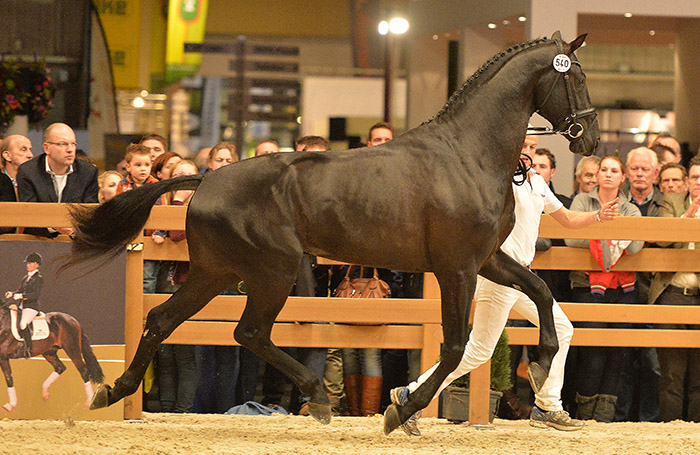
A star from the start, Glamourdale at the KWPN Licensing…
How old was he when you found him?
“He was exactly eight days. The breeder came with the mare and Glamourdale as a foal, to breed to Lord Leatherdale and when the breeder took the foal from the trailer, the first thing I thought was whatever happens I want him, I bought him right there. We do a lot of dealing with this breeder and I always buy the foals from the breeders – that’s a little bit our business, we buy a lot of foals from our stallions, but Glamourdale was from the first moment exceptional.”
What mares does he work best with?
“He’s doing very well with nice big mares with a lot of blood. He’s useable on a lot of mares. I would say, 78% of the mares, he is useable on. He’s bringing the power, he brings the unbelievable canter that he has himself, he’s passing that on. He is out of a mare by Negro, by the stallion we bought in Westfalia, Lord Leatherdale, that’s a very proven combination: Everdale, Chippendale, Glamourdale, that’s a real proven combination.”
Will you have to look outside your established lines for new stallion blood?
“I’m looking every day, as soon as I hear of something interesting, I want to go and see, I’m busy every day trying to find something that can fit on our bloodlines. It’s a nice journey, we have some nice young horses, some could be the new stallions to fit into our breeding program. We bought two nice young horses in Oldenburg last year, one by Secret, then we have some nice Glamourdales coming from the first crop, so I am looking to the future..”
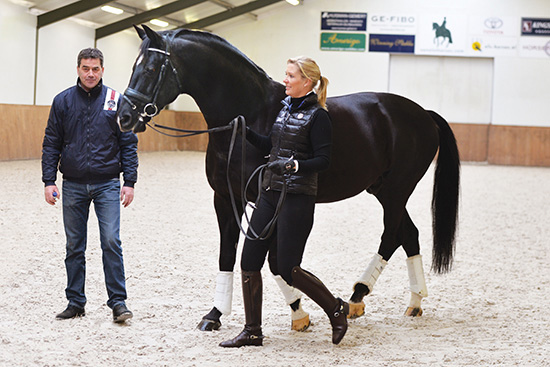
Gert-Jan and Anne van Olst, and Negro
Breeding your own dressage star in Australia this season? Look for the top European blood lines like these at International Horse Breeders. Go to www.ihb.com.au





